Cable categories, from CAT1 to CAT7. Maximum length of UTP twisted pair cable for LAN Category cat 5e
There are several categories of cable twisted pair, which are numbered from CAT1 to CAT7 and define the effective throughput frequency range... Higher grade cable usually contains more pairs of wires and each pair has more turns per unit length. The categories of unshielded twisted pair are described in EIA / TIA 568 (American Commercial Building Wiring Standard) and in the international standard ISO 11801.
Category 1 twisted pair
CAT1 (0.1 MHz bandwidth) - telephone cable, only one pair (in Russia, a cable is used and generally without twists - "noodles" - its characteristics are not worse, but the influence of interference is greater). In the USA it was used earlier, only in a "twisted" form. Used only for voice or data transmission using a modem.
Category 2 twisted pair
CAT2 (frequency band 1 MHz) - old type of cable, 2 pairs of conductors, supported data transmission at speeds up to 4 Mbps, was used in Token ring and Arcnet networks. Now sometimes found in telephone networks.

Category 2 twisted pair
Category 3 twisted pair
CAT3 (frequency band 16 MHz) - 4-pair cable, used in the construction of telephone and local networks 10BASE-T and token ring, supports data transfer rates up to 10 Mbit / s or 100 Mbit / s using 100BASE-T4 technology at a distance no further 100 meters. Unlike the previous two, it meets the requirements of the IEEE 802.3 standard.

Category 3 twisted pair
Category 4 and 5 twisted pair
CAT4 (20 MHz frequency band) - the cable consists of 4 twisted pairs, was used in token ring, 10BASE-T, 100BASE-T4 networks, the data transfer rate does not exceed 16 Mbit / s over one pair, is not used now.
CAT5 (frequency band 100 MHz) - 4-pair cable, used in the construction of local networks 100BASE-TX and for laying telephone lines, supports baud rate up to 100Mbps when using 2 pairs.

Category 5 twisted pair
Category 5e twisted pair
CAT5e (125 MHz bandwidth) - 4-pair cable, enhanced category 5. Data rates up to 100 Mbps using 2 pairs and up to 1000 Mbps using 4 pairs. Category 5e cable is the most common and is used to build computer networks.

Category 5e twisted pair
Category 6 twisted pair
CAT6 (250 MHz frequency band) - used in Fast Ethernet and Gigabit Ethernet networks, consists of 4 pairs of conductors and is capable of transmitting data at speeds up to 1000 Mbps. Added to the standard in June 2002.
CAT6a (500 MHz bandwidth) - used in Ethernet networks, consists of 4 pairs of conductors and is capable of transmitting data at speeds up to 10 Gb / s and it is planned to use it for applications operating at speeds up to 40 Gb / s. Added to the standard in February 2008.

Category 6 twisted pair
Category 7 twisted pair
A special place is occupied by cables of category 7 (not UTP!):
CAT7 - specification for given type The cable is approved only by the international standard ISO 11801, the data transfer rate is up to 10 Gbps, the frequency of the transmitted signal is up to 600-700 MHz. Cable in this category has an overall shield and shields around each pair. The seventh category, strictly speaking, is not UTP, but S / FTP (Screened Fully Shielded Twisted Pair).

Category 7 twisted pair
Each separately taken twisted pair, which is part of the cable intended for data transmission, must have a characteristic impedance of 100 ± 25 Ohm, otherwise the shape electrical signal will be distorted and data transmission will not be possible. The cause of problems with data transmission can be not only poor quality cable, but also the presence of "twists" in the cable and the use of outlets of a lower category than the cable.
If you decide to establish an Internet connection in an office building or at home, you don't have to think about which category twisted pairs used. Since using short distances and low transmission rates, this issue is not important. The network connection can be created using any twisted pair, plug, socket, which are sold on the market. On this moment to create an inexpensive and fairly high-speed network, a shielded twisted pair cable "UTP", which belongs to the CAT5 category, is used.
Cables are classified according to the international standard ISO 11801 and the EIA / TIA-568 specification. Russia uses two types of GOST: GOST R 53245-2008, which is based on technical regulations one of the largest cable manufacturers; GOST R 53246-2008 (analogue of American ANSI / TIA / EIA-568B). I have given a small part of the information taken from the documents. She will help you create network connection... The cable design depends on the baud rate. Cables can be either shielded or unshielded. They are designated according to the classification given in the table.
The shield serves to reduce the radiation of the electromagnetic field of twisted pairs and protects them from the effects of an external field. Such cables are used during the laying of trunk lines, as well as in rooms with a large electromagnetic field. In a domestic environment, an unshielded UTP cable is used.
The cores in the cable can be of two types - stranded and from a single conductor. The cores in single-core pairs are produced with a diameter of 0.51 mm. They are used to mount networks in boxes. It is quite easy to install such a cable into communication devices. Stranded conductors are intended for installation in places with high stress, such as kinking caused by connecting the patch cord to the cable. Multi-core cables have a higher signal attenuation than single-core cables. To crimp such a cable, you must have a special RJ-45 connector. Their difference is that the teeth in the lamellas are set apart. Most often, cable sheaths are made of polyvinyl chloride, to which chalk is added. This is done so that the cable is well stripped. The area of application is determined by the color of the shell.
Cables can be round or flat. The cable sheath has a marking, which is applied at intervals of 0.3 m. It indicates the cable category, manufacturer, and meter. That allows you to find out the length of the cable without using a measuring tool.
This cable is designed for use in temperatures up to 75 ° C; UTP - no shielding; 4PR - consists of 4 twisted pairs; EIA / TIA-568 - Produced per EIA / TIA-568 specification, labels are in feet.
If you cut the shell, you can see the nylon thread laid along the twisted pairs. It is designed to give strength to the cable, as well as to protect pairs from damage during stripping. To cut the cable, it is enough to remove a couple of centimeters of the braid, grab the thread and pull it in the opposite direction. The thread is called split because it will split the cable along pairs.
At the moment, the number of cable categories is seven. The most important criterion for determining the category of a cable is the high-speed data exchange capability (measured in Mbps). The larger this number, the faster the data exchange takes place, which takes place per unit of time.
Frequency band up to, MHz | Data transfer rate up to, Mbit / sec. | Purpose and design |
|
Voice signal transmission, telephone "noodles" TRP |
|||
2 pairs of conductors, currently not used |
|||
4-pair cable for telephone and local networks up to 100 meters |
|||
4 pair cable, currently not applicable |
|||
100 when using 2 pairs | 4-pair cable for telephone and local networks |
||
100 when using 2 pairs | UTP 4 pair cable for computer networks |
||
1,000 using 4 pairs, 10,000 at up to 50 meters | UTP 4 pair cable for computer networks |
||
UTP 4 Paired High Speed Internet Lines Cable, Perspective |
|||
S / FTP 4 Paired High Speed Internet Lines Cable, Perspective |
Twisted pairs have a resistance of 100 ± 25 ohms. The rest of the connections reduce data exchange. They also include twists. This is very noticeable in areas of great length. At the moment, to create networks, the CAT5e cable is used, through which data is transmitted over two pairs. Often, these are orange and green.
Indeed, older Category 5 (TIA / EIA) cabling systems could not support gigabit applications, which is why Category 5e requirements were developed. However, in the standards themselves for cable components and systems in general, you will not find a direct relationship between applications and categories. This relationship is indirect, across the frequency range and bandwidth. B is an extract from ISO / IEC 11801: 2002, Appendix F.
Class D, defined up to 100 MHz in accordance with ISO / IEC 11801: 2002, is analogous to Category 5e in ANSI / TIA / EIA-568-B. As you can see, systems of this type can implement not only Fast Ethernet applications, but also 1 Gigabit Ethernet. The Ethernet applications themselves are described in IEEE 802.3 documents.
Categories 1 and 2
Category 1 and 2 balanced twisted pair. No longer recognized as a transmission medium by ANSI / TIA / EIA-568-B standards. Previously used for voice and low-speed data transmission (9600 bps or less).
Category 3
Balanced twisted pair, cable and passive switching equipment. Recognized by ANSI / TIA / EIA-568-B standards as a transmission medium for speech applications, but not recommended for use in new cable systems. Cable specifications are specified up to 16 MHz. Historically, Category 3 media has been used for voice and data transmission at speeds up to 10 Mbps (IEEE 802.5, 4 Mbps balanced twisted pair supplement, and IEEE 802.3 10BASE-T).
Category 4
Balanced twisted pair. Component characteristics are specified in the frequency range up to 20 MHz. The components were intended for use in voice and data transmission at speeds up to and including 16 Mbit / s. (IEEE 802.5 Balanced Twisted Pair Standard for 16 Mbps). No longer recognized by ANSI / TIA / EIA-568-B or ISO / IEC 11801: 2002.
Category 5
Balanced twisted pair. Component characteristics are specified in the frequency range up to 100 MHz. The components were intended for use in voice and data transmission at speeds up to 100 Mbit / s (100BASE-TX) inclusive. The ANSI / TIA / EIA-568-B.1 standard no longer recognizes this category for new systems.
Category 5e
Component specifications have been specified for frequencies up to 100 MHz, with new ones added to the test list to ensure support for applications using all 4 pairs in bidirectional (full duplex) mode. See IEEE 802.3 1000BASE-TX standard.
Category 6
Category 6 channels have a bandwidth of up to 200 MHz (the area in which the signal-to-noise ratio is positive, PSACR> 0), while the transmission media parameters are specified in the range up to 250 MHz. Category 6 cabling is designed to support more demanding applications (high-bandwidth video, for example) and more robust support for 1-Gigabit applications (IEEE 802.3 1000BASE-TX). These systems are designed to be used in the future for multi-gigabit applications requiring more bandwidth and a wider area in which the signal-to-noise ratio is positive.
 How to update iPad: instructions
How to update iPad: instructions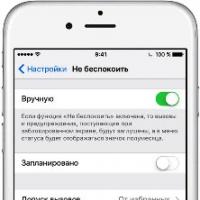 How Do Not Disturb mode works on iPhone
How Do Not Disturb mode works on iPhone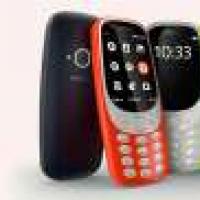 Nokia 3310 when it came out. How they find us
Nokia 3310 when it came out. How they find us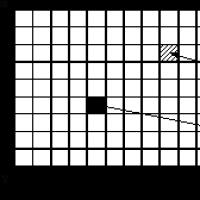 History of computer graphics in Russia 1 history of development of computer graphics
History of computer graphics in Russia 1 history of development of computer graphics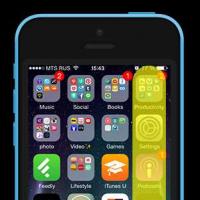 Complete order: How to organize icons on a smartphone Complete order: How to organize icons on a smartphone
Complete order: How to organize icons on a smartphone Complete order: How to organize icons on a smartphone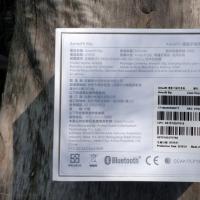 Xiaomi Huami Amazfit Bip is the best smartwatch without any but even if
Xiaomi Huami Amazfit Bip is the best smartwatch without any but even if What is Jailbreak and what is it for?
What is Jailbreak and what is it for?